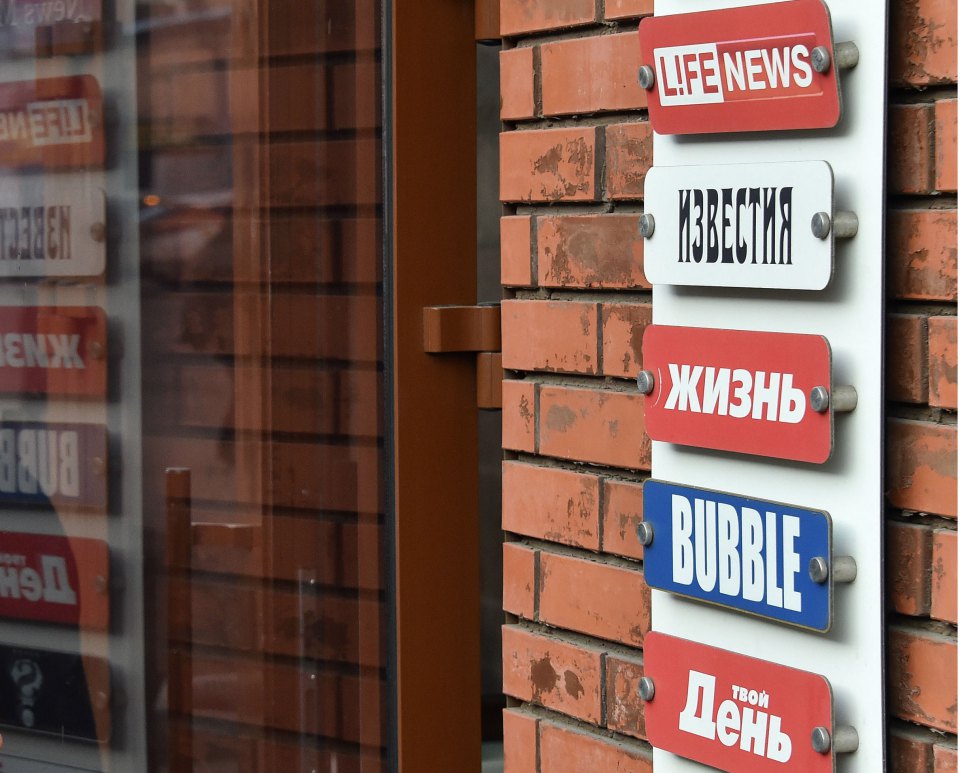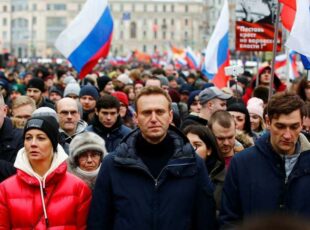The Twilight of Life News
Why Aram Gabrelyanov’s empire is surplus to the Kremlin’s requirements.

Oleg Kashin
On the night of November 11-12, two Life staff members were severely beaten by six unidentified assailants on Moscow’s Kievskaya Street. The victims weren’t journalists; Mark Bezymenny and Vladimir Serenko are employed by Life as producer and assistant producer respectively, so it wouldn’t be entirely correct to describe the incident as an “attack on journalists.” Nor, in fact, is the phrase “unknown assailants” wholly appropriate: the footage of the incident is, if anything, more reminiscent of a scene from a police video depicting a no-nonsense arrest. The Life employees are handcuffed and searched, and one of them is dragged into a waiting vehicle; meanwhile, an attacker not actively participating in the beating even shows them something resembling an official ID card. The official version of events, which emerged over twenty-four hours later, runs counter to every aspect of the footage – it would have us believe that a group of thugs were planning an attack on some drug dealers and seemingly got their wires crossed. The Moscow Department of the Russian Interior Ministry was at pains to stress that there has been no substantiation of intelligence suggesting that the “six assailants” were actually police operatives; yet it was reported earlier that a criminal case has been opened into the attack on charges of “exceeding official powers.” Two people have been arrested, one of whom is reportedly a former police officer. Life itself, outwardly unruffled, is sticking to the official version, although editorial manager Anastasiya Kashevarova has insisted that it was criminal investigation operatives who carried out the attack.
Aram Gabrelyanov’s media holding is looking highly vulnerable on all sorts of levels. The Life television channel faces virtual extinction, transitioning as it is from on-air broadcasting to an online-only operation. Gabrelyanov himself has dubbed this “progress” while making noises about the “natural evolution” of contemporary media; in truth, however, this overhaul feels like the clock has been turned back several years to the days when the tabloid had only just started producing videos for its site. And it’s doubly strange in the sense that only two or three years ago, the channel – then called LifeNews – was setting the benchmark for other pro-regime media outlets. Its finest hour came during the war in Eastern Ukraine; virtually a full-fledged participant in the Donbas conflict, LifeNews made a star of the notorious militant Motorola. Later, its front-line reporters joined Russian troops in Syria. Life spent years cultivating a reputation as a pre-eminent military news channel – only to shy away from it now, suddenly and abruptly; even its overhauled website has become more reminiscent of an entertainment resource than a propagandist tabloid.
In the early 2010s, the flagship venture of Gabrelyanov’s media holding was the Izvestiya newspaper, created (the age-old brand notwithstanding) virtually from scratch five years ago and turned into a mouthpiece for Russian officaldom. Izvestiya began featuring daily leaks from the Kremlin and the security services, and its comment section became a kind of stengazeta [wall-newspaper] for the Kremlin’s domestic policy administration. Control of Izvestiya was wrested from Gabrelyanov when it suddenly transpired that the newspaper’s shareholders (Yuri Kovalchuk’s National Media Group) were unhappy with its quality.
By autumn of this year, the Russian media king of the early 2010s was relegated to the status he’d held ten or fifteen years ago – namely, that of lowly tabloid publisher. Political explanations for the decline of Life aren’t hard to come by. Vyacheslav Volodin, regarded as Gabrelyanov’s patron, is no longer in the Kremlin. Further, the Investigative Committee, with which Life enjoyed close relations, and courtesy of which it scored its most scandalous exclusives, has parted ways with media man Vladimir Markin, who wrote columns for Izvestiya and Life; relations between the Investigative Committee and Life are, it would appear, close no more. Finally, mysterious hackers bearing more than a passing resemblance to participants of the Kremlin’s agency wars have been publishing Aram Gabrelyanov’s correspondence – just like Gabrelyanov once released audio recordings of oppositionists’ telephone conversations.
It’s clear, then, that at some juncture or other, Life became surplus to the regime’s requirements – and the prospects for “court favourites” who’ve suddenly fallen from grace are inevitably grim. Now, the Russian public has witnessed numerous attacks on independent media outlets; some, like Gusinsky’s NTV or Galina Timchenko’s Lenta.ru, were destroyed outright, while others, such as Kommersant or today’s RBC, remained more or less intact (though only after having sacrificed certain staff members and agreeing to stick to certain red lines). But this represents the first time that the Kremlin has attacked a veritable exemplar of pro-regime loyalty; problems in this segment of the market have always been resolved with a simple phone call from – or to – the Kremlin, so it would appear that something has now gone awry with the connection.
By the second day after the attack on Bezymenny and Serenko, Life had adopted a decidedly neutral tone in its reporting of the incident, suggesting that the matter has been smoothed over – though we can only guess how. Perhaps we shall discover in a few weeks’ time that Aram Gabrelyanov has decided to withdraw without demanding any pecuniary compensation from the shareholders; perhaps he’ll be joined at Life by new managers with the reputation of “methodologists;” or perhaps Kovalchuk will elect to sell the holding to a new owner who shall go on to determine Life’s editorial policy. But here’s what cannot and will not happen: an aggrieved Gabrelyanov would never become a critic of the regime, nor would he attempt to deploy all the media weaponry still at his disposal against the Kremlin or even the siloviki.
The experienced and wise media manager understands that he can do no more than grin and bear all the aforementioned developments – the wresting of Izvestiya from his control, the virtual demise of his TV channel, and, finally, the mysterious attack on Bezymenny and Serenko. The regime dispenses with insiders and loyalists no less ruthlessly than it crushes oppositionists; and if the death of Lenta.ru spawned the birth of Meduza, no “new Life” will be spawned by the death of the old. Aram Gabrelyanov has nowhere to run; his loyalty, for many years the primary source of his competitive advantage, is now fast becoming a “black spot” that he will struggle to shake off.
This article was first published in Republic



